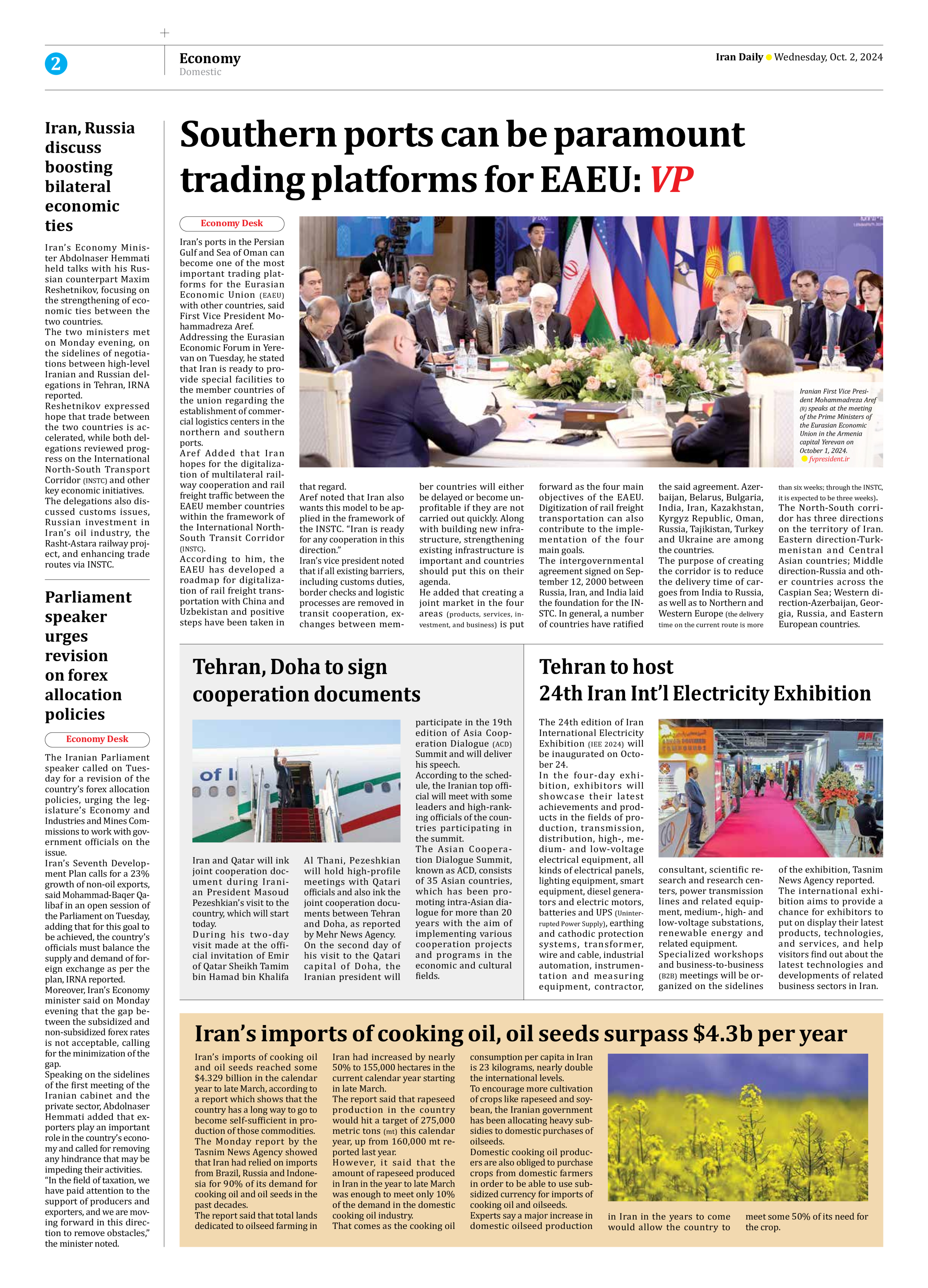
Southern ports can be paramount trading platforms for EAEU: VP
Iran’s ports in the Persian Gulf and Sea of Oman can become one of the most important trading platforms for the Eurasian Economic Union (EAEU) with other countries, said First Vice President Mohammadreza Aref.
Addressing the Eurasian Economic Forum in Yerevan on Tuesday, he stated that Iran is ready to provide special facilities to the member countries of the union regarding the establishment of commercial logistics centers in the northern and southern ports.
Aref Added that Iran hopes for the digitalization of multilateral railway cooperation and rail freight traffic between the EAEU member countries within the framework of the International North-South Transit Corridor (INSTC).
According to him, the EAEU has developed a roadmap for digitalization of rail freight transportation with China and Uzbekistan and positive steps have been taken in that regard.
Aref noted that Iran also wants this model to be applied in the framework of the INSTC. “Iran is ready for any cooperation in this direction.”
Iran’s vice president noted that if all existing barriers, including customs duties, border checks and logistic processes are removed in transit cooperation, exchanges between member countries will either be delayed or become unprofitable if they are not carried out quickly. Along with building new infrastructure, strengthening existing infrastructure is important and countries should put this on their agenda.
He added that creating a joint market in the four areas (products, services, investment, and business) is put forward as the four main objectives of the EAEU. Digitization of rail freight transportation can also contribute to the implementation of the four main goals.
The intergovernmental agreement signed on September 12, 2000 between Russia, Iran, and India laid the foundation for the INSTC. In general, a number of countries have ratified the said agreement. Azerbaijan, Belarus, Bulgaria, India, Iran, Kazakhstan, Kyrgyz Republic, Oman, Russia, Tajikistan, Turkey and Ukraine are among the countries.
The purpose of creating the corridor is to reduce the delivery time of cargoes from India to Russia, as well as to Northern and Western Europe (the delivery time on the current route is more than six weeks; through the INSTC, it is expected to be three weeks).
The North-South corridor has three directions on the territory of Iran. Eastern direction-Turkmenistan and Central Asian countries; Middle direction-Russia and other countries across the Caspian Sea; Western direction-Azerbaijan, Georgia, Russia, and Eastern European countries.







